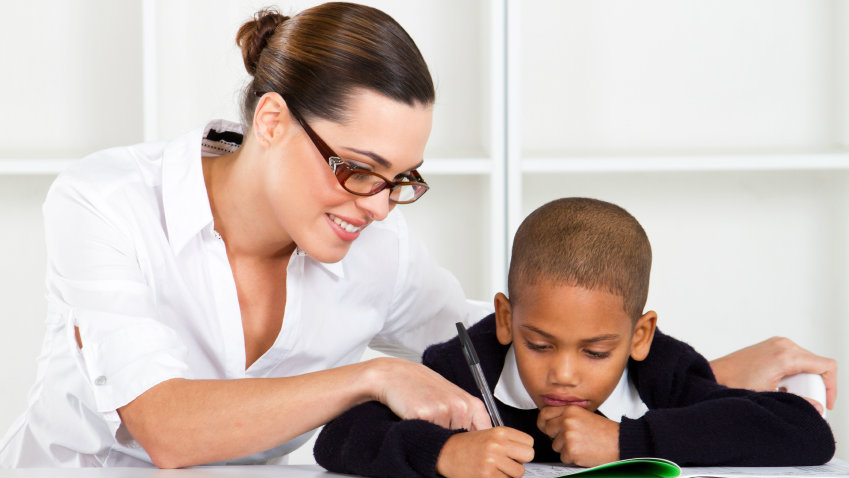
This phenomenon can create a culture gap and lead to poor achievement among students of color. More and more teachers, however, are getting training in a style of teaching that helps close the culture gap and improve learning for students of color.
The series is another installment in our ongoing exploration of the achievement gap between students of color and their peers.
Part 1: Teachers undo personal biases to help students of color engage (Feb. 5, 2014)
The first in our series looks at how one teacher came to realize that she treated her students of color and white students differently. The problem is widespread and often teachers don’t realize they are doing it. The story offers a deeper look into the process teachers can go through to uncover biases and learn techniques and strategies to help their students of color succeed.
Part 2: How Mr. Anderson connects with kids of color (Feb. 6, 2014)
In the second installment of the series, we go inside the classroom of William Anderson, an African-American ethnic studies teacher and trainer at Denver’s Martin Luther King Jr. Early College high school. Anderson believes students who have significant challenges outside of school don’t care about test scores unless teachers show them they care about them as individuals. We see how he practices a style of teaching that builds relationships with his students that makes them excited about learning.
Part 3: Why are all my teachers white? (Feb. 7, 2014)
The third installment explores the obstacles to attracting more teachers of color into Colorado classrooms and what’s being done about to bring in these teachers. Three quarters of Denver’s students are students of color but about three-quarters of district teachers are white. Experts agree that having more teachers of color could help narrow the achievement gap and dispel myths and stereotypes for all students.
Previously, we reported on several factors explaining the achievement gap: lack of state funding for public schools, poor access to quality preschool and not enough support to bridge the world of poverty and the world of college.








